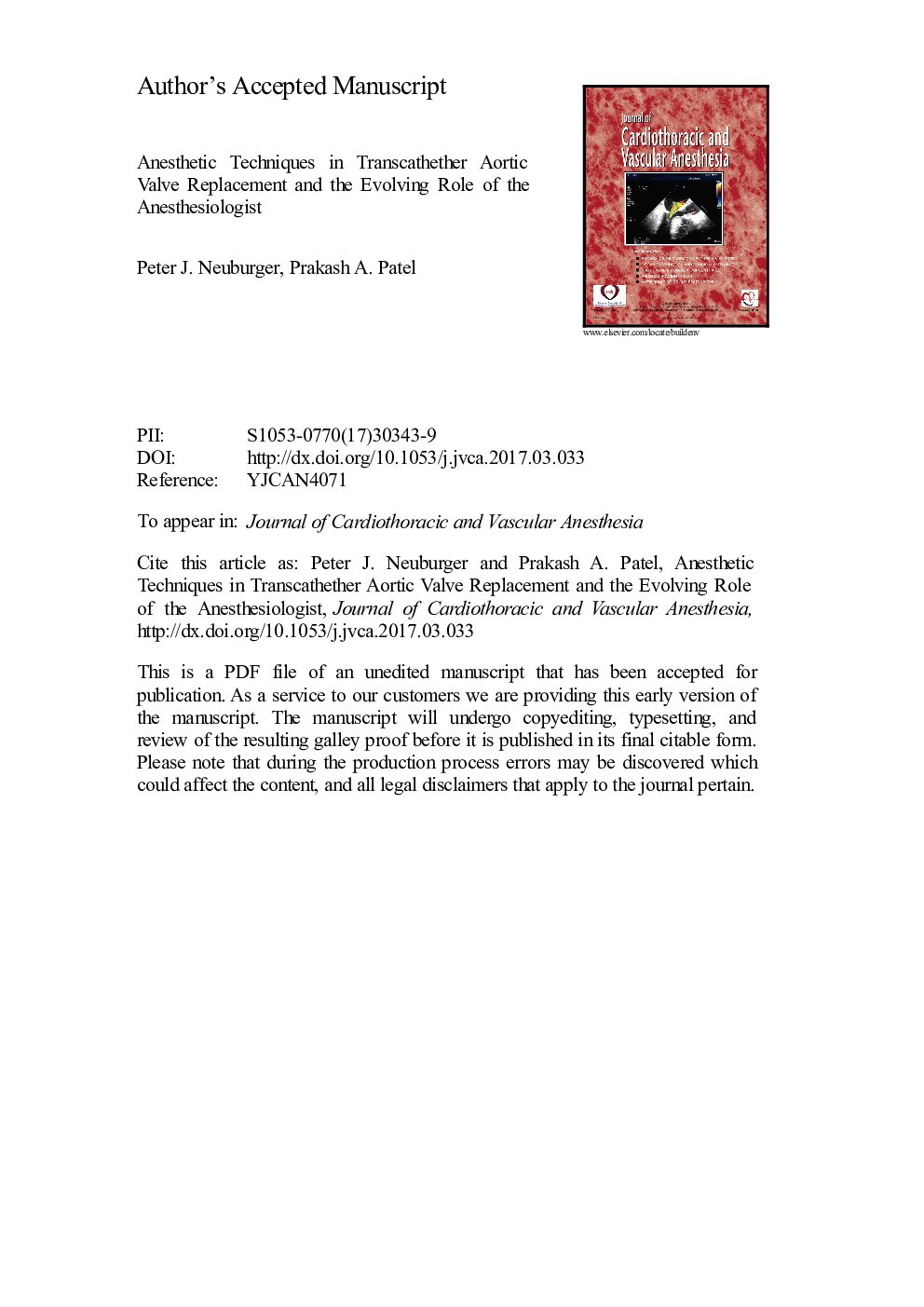| Article ID | Journal | Published Year | Pages | File Type |
|---|---|---|---|---|
| 8619138 | Journal of Cardiothoracic and Vascular Anesthesia | 2017 | 38 Pages |
Abstract
The development of transcatheter aortic valve replacement (TAVR) has transformed the treatment of patients with aortic valve disease. This procedure now is used widely for patients at high and intermediate risk for surgical aortic valve replacement. The rapid acceptance and popularity of TAVR most clearly was enabled by advancements in device technology and procedural experience. Such a dramatic change to the standard medical practice is not without consequence to fields of medicine beyond cardiology and cardiac surgery. Anesthesiologists have witnessed this movement first hand, and while improved anesthetic techniques have contributed to the success of the procedure, in return these improved outcomes likely will result in further changes to perioperative anesthetic management. In this review the authors sought to evaluate the role and responsibility of the cardiac anesthesiologist in the development of TAVR. Future advancements in device technology and considerations of how the anesthetic technique for TAVR may continue to evolve in future years are discussed.
Keywords
Related Topics
Health Sciences
Medicine and Dentistry
Anesthesiology and Pain Medicine
Authors
Peter J. MD, Prakash A. MD,
